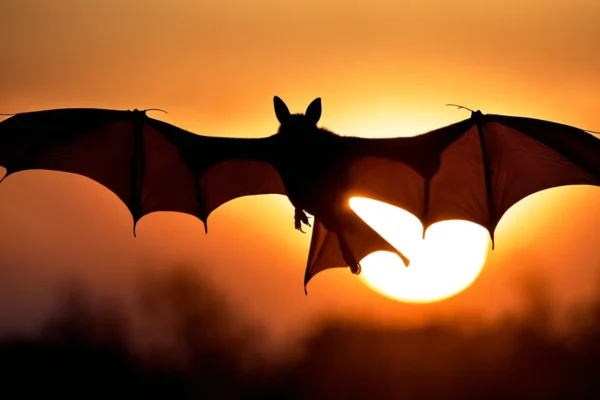One of Ace Combat 7’s most recognizable superweapons is the formidable Arsenal Bird. This flying fortress terrorizes opposing pilots with its vast assortment of laser armaments and seemingly indestructible defenses.
For those with limited time, the following is a brief response to your inquiry: The Arsenal Bird is a huge drone equipped with energy defenses, strong laser weaponry, and drone production capabilities.
In Ace Combat 7, it is a vital strategic asset for the Erusean military, functioning as a movable airborne aircraft carrier.
We’ll examine the Arsenal Bird’s strengths, shortcomings, and place in the Ace Combat 7 narrative in this extensive study. We’ll look at how to defeat an Arsenal Bird, discover the real-world influences on its creation, and discover why it’s such a dangerous foe.
The Arsenal Bird’s design, capabilities, physical attributes, and layout
The Erusean military created the massive flying wing aircraft known as the Arsenal Bird. Having a wingspan of 600 meters, this aircraft is among the biggest ever built. The Arsenal Bird lacks a distinct fuselage and tail parts, giving it a broad, flat shape.
For propulsion, it is equipped with many sizable internal jet engines.
For defense, the top surface of the aircraft is covered with a variety of electromagnetic railguns. Drone launch and control facilities are located on the lower wing surface. The Arsenal Bird’s main offensive tool is a potent high-energy laser system located in the front.
Laser Weapons for Offense
The Arsenal Birds’ formidable forward-firing laser guns are their distinguishing weaponry. These direct energy weapons are able to fire intense megawatt-class beams that can easily slice through the majority of airborne targets.
The Arsenal Bird can hit many targets at once since the lasers reload quickly.
The Arsenal Bird uses cutting-edge tracking, targeting, and prediction algorithms to accurately aim its lethal beams in order to make the most of these lasers. Due to their ability to quickly eliminate threats before they reach missile range, the lasers serve as mid-to-long range standoff weapons.
Production and Management of Drones
The Arsenal Bird’s capacity to launch and manage a large fleet of MQ-101 drones that are semi-autonomous is one of its primary features. If any drones are shot down, its many internal factories can swiftly produce replacements.
The Arsenal Bird’s sensor coverage and firepower are increased by this swarm of nimble drones. They have direct communication with the mothership, which has the ability to take command and plan drone strikes to maximize their impact.
Energy Shield for Defense
The Arsenal Bird uses transmitters spread over its top surface to create a wide-area electromagnetic shield for defense. With ease, this barrier can deflect even hefty, long-range rockets.
Aircraft have to close to very small engagement ranges in order to breach this strong defense. But getting this near exposes them to deadly fire from the Arsenal Bird’s swarming drones and laser weapons.
The Arsenal Bird can provide virtually impenetrable aerial defense over a wide region thanks to its strong shield. The only options available to the enemy are to either completely avoid the protected zone or launch very dangerous close-quarters strikes.
Ace Combat 7: The Arsenal Bird’s Role in Guarding the Space Elevator
Designed to safeguard Erusea’s interests and the Space Elevator, the formidable Arsenal Bird made its debut in Ace Combat 7. Erusea relied on the Arsenal Bird to keep control of the Space Elevator due of its strong shielding and almost indestructible armor.
It was a frightening sight to see and a fierce opponent for anybody who ventured to confront it.
The main objective of the Arsenal Bird was to protect the area around the Space Elevator launch pad. It could launch and operate a large number of MQ-101 unmanned combat aerial vehicles (UCAVs) to intercept approaching threats using its sophisticated drone control capabilities.
This made it very difficult to get past the Arsenal Bird’s defenses. Its swarms of drones made it impossible for any but the most experienced pilots to avoid and take on the Arsenal Bird head-on.
Conflict in Yinshi Valley
During the Battle of Yinshi Valley, the Arsenal Bird played a crucial role. The massive presence of the Arsenal Bird unexpectedly halted Osean soldiers as they tried to push down the valley to attack the Erusean military.
The drone attacks from the Arsenal Bird took the Oseans totally off surprise and prevented them from responding. Before long, the valley was a mass cemetery of crashed Osean planes and broken dreams.
But when Osean ace pilot Trigger showed there, things took a drastic turn. Trigger showed amazing dexterity in dodging the Arsenal Bird’s drones and getting past its defenses.
Following a tough battle, Trigger was able to inflict enough damage on the Arsenal Bird to make it flee. Despite suffering a huge loss of aircraft, the Oseans were able to advance because they were able to turn back the Arsenal Bird.
Defending Farbanti
The Arsenal Bird was used once again to block Osean soldiers as they advanced into Farbanti, the capital of Erusea. The Arsenal Bird, positioned close to the city, used its drones to cover Farbanti while launching destructive airburst missile attacks on the Oseans.
Once again, Trigger played a crucial role in ending the standoff by progressively weakening the Arsenal Bird’s defenses with long-range missiles. Trigger and his squadron eventually managed to damage one of the Arsenal Bird’s propulsion motors, resulting in the aircraft collapsing after a fierce struggle. Osean aircraft could target Farbanti since the Arsenal Bird was not in service.
The Arsenal Bird lived true to its reputation as Erusea’s sturdy protector, even in the face of its inevitable defeat. It seemed unstoppable for a while, slicing through Osean armies and altering the course of whole battles. Its rule could only be ended by extreme hardship and sacrifice.
Taking down an Arsenal Bird That Was Penetrating the Energy Barrier
The Arsenal Bird’s enormous energy barrier, which is capable of deflecting even the strongest missile strikes, is its most effective line of defense. High-powered laser weapons must be used to briefly disable tiny areas and create weaknesses in order to breach this barrier.
The most recent high-tech laser guns are capable of projecting intense beams that can break through energy barriers, but they need to be timed and targeted with incredible precision. It’s possible that pilots will only have a few seconds to fire missiles through the opening before it closes again.
A different tactic would be to overload the shield generators around the Arsenal Bird’s perimeter with swarm missile strikes. While the majority of the missiles will be deflected, some could get through and harm the emitters.
Larger projectiles may be able to pass through the holes created by this, which may lessen the power of the shield. The difficulty is in launching a sufficiently enough saturation attack before the defensive countermeasures of the Arsenal Bird can adjust.
Putting Propulsion Systems First
The Arsenal Bird creates lift and thrust with the use of enormous ducted fans set into its wings. If these fans are destroyed, the aircraft’s movement would be severely limited, making it susceptible. A direct missile hit is difficult, however, because of the protected engine housings.
Using precision-guided explosives that can burst through the hull and explode within to disable the fan systems is the best course of action.
A different approach is to go for the thrust vectoring nozzles of the Arsenal Bird. Steering control is provided by these open exhaust outlets on the trailing edges of the wings. A few precisely placed rounds to destroy the nozzle actuators may send the plane into a spin.
Catastrophic failures may potentially result from stalling the ducted fans or starting an internal engine fire. Since an onslaught on the propulsion systems would be very difficult, the objective is to disable them indirectly.
Leveraging Design Flaws
The Arsenal Bird is almost immune to conventional harm due to its enormous size and armour. However, certain design weaknesses may still be taken advantage of:
In the event that missiles breach the shield, the uppermost sensor arrays are exposed.
Steering may be altered by disabling the exposed rear propeller systems.
Coordination between the two sides of the control signal is impacted when the connection is jammed.
Thick armor plate seen on the topside is absent from the lower hull section.
A clever pilot has a better chance of success if they identify and attack these weak places. One inventive move may be to approach from below and deliver a large payload to the thinner belly armor by exploiting terrain masking, for instance.
Success is more likely if one can find methods to impair rather than destroy.
Naturally, one should always carefully evaluate assaulting an Arsenal Bird in light of the mission’s broader goals. Even removing one of these resources might quickly and unexpectedly intensify the war.
Nonetheless, knowing the limitations of these devices is still vital information for any pilot taking on the difficult task of surviving an engagement. Although the Arsenal Bird’s massive size may appear intimidating, it can be conquered with careful planning, deft execution, and a little bit of luck.
Real-World Sources and Inspirations Linkages to the Boeing YAL-1
The Boeing YAL-1 and other real-world directed energy weapons served as models for the Arsenal Bird’s design. This was an experimental airborne laser system that used a chemical oxygen iodine laser (COIL) with a megawatt-class to fire down missiles.
The huge turret design and laser beam armament of the YAL-1, while never put into full production, undoubtedly inspired the Arsenal Bird’s look and capabilities.
Influences of Sci-Fi and Anime
The Arsenal Bird incorporates elements from science fiction and anime in addition to actual prototypes. It reminds me of heavenly Evangelions from Neon Genesis Evangelion because of their massive size and robotic bird form. Furthermore reminiscent of science fiction starship phalanx beam guns is the defensive laser system.
Because of these pop cultural references, the Arsenal Bird seems both futuristic and recognizable.
Changes since the Aigaion
Although it made its debut in Ace Combat 7, the Aigaion heavy command cruiser from Ace Combat 6 is where the Arsenal Bird got its start. Drone fighter units were commanded by the enormous flying wing aircraft known as the Aigaion.
The Arsenal avian expands on this idea by using directed energy weaponry and a completely robotic avian form. In the made-up history of Strangereal, it is an advancement of the same unmanned aerial warfare idea that the Aigaion first introduced years ago.
Final Thoughts
One of the most terrifying superweapons in Ace Combat history is the Arsenal Bird, thanks to its massive stature, lethal firepower, and robust defenses. It takes a lot of preparation, fast thinking, and taking advantage of any flaw in the design to take one out.
However, players may overcome the Arsenal Bird’s technical supremacy with skill and dedication. One of the campaign’s highlights is the satisfaction of eventually seeing one of these airborne castles go up in flames in Ace Combat 7.
The Arsenal Bird’s sheer presence and splendor captivate players’ attention. It redefines the scope of aviation combat and tests pilots to the breaking point. There’s no doubting the Arsenal Bird has an influence, whether you love or despise facing up against it.




![Where Do Owls Nest? [A Comprehensive Guide]](https://birdsology.com/wp-content/uploads/2023/09/Great_Horned_Owls_in_Nest-600x400.jpg.webp)

